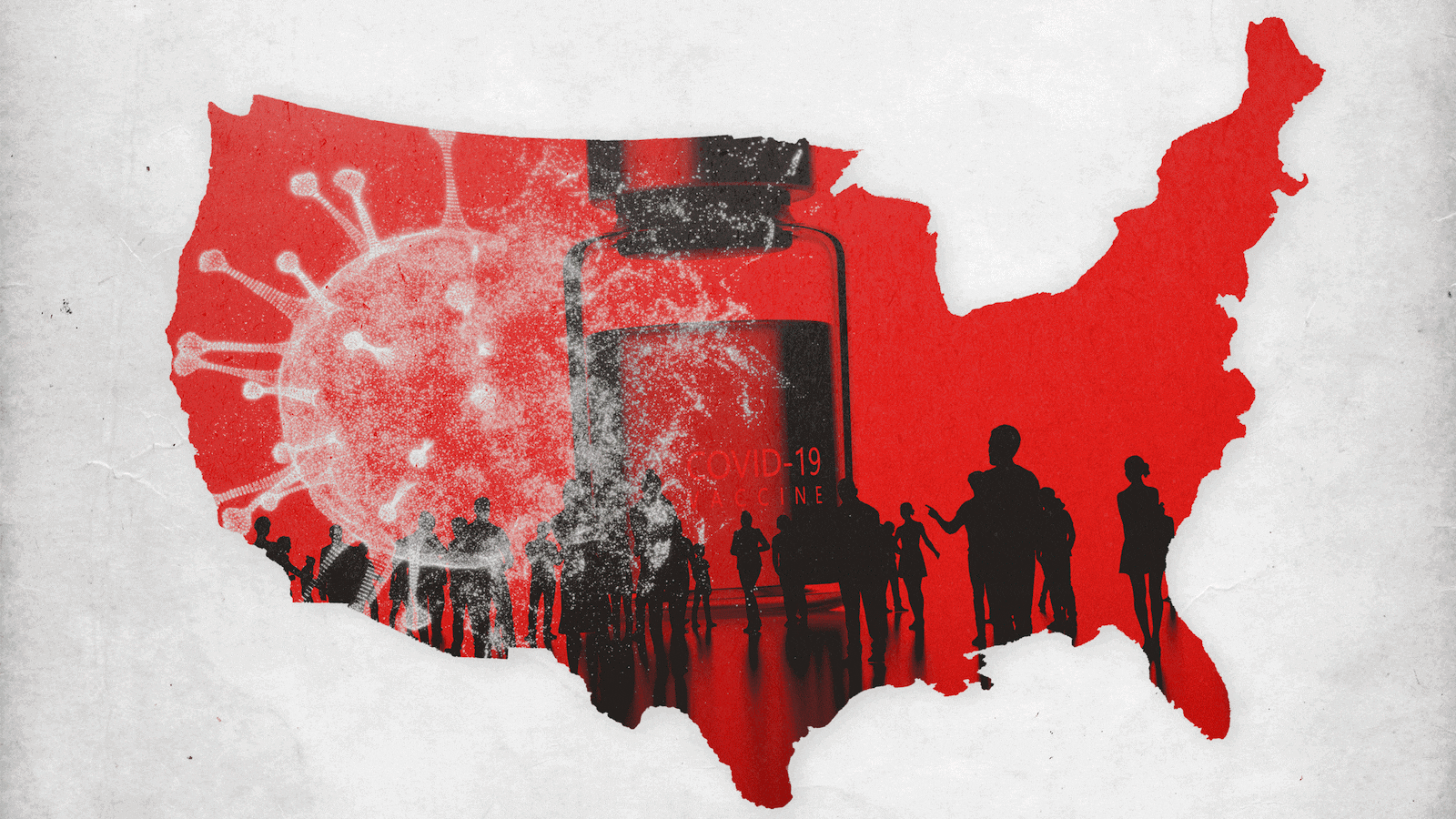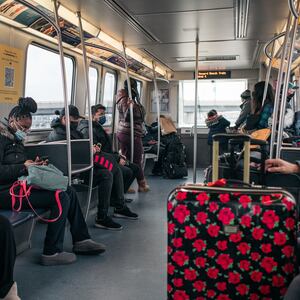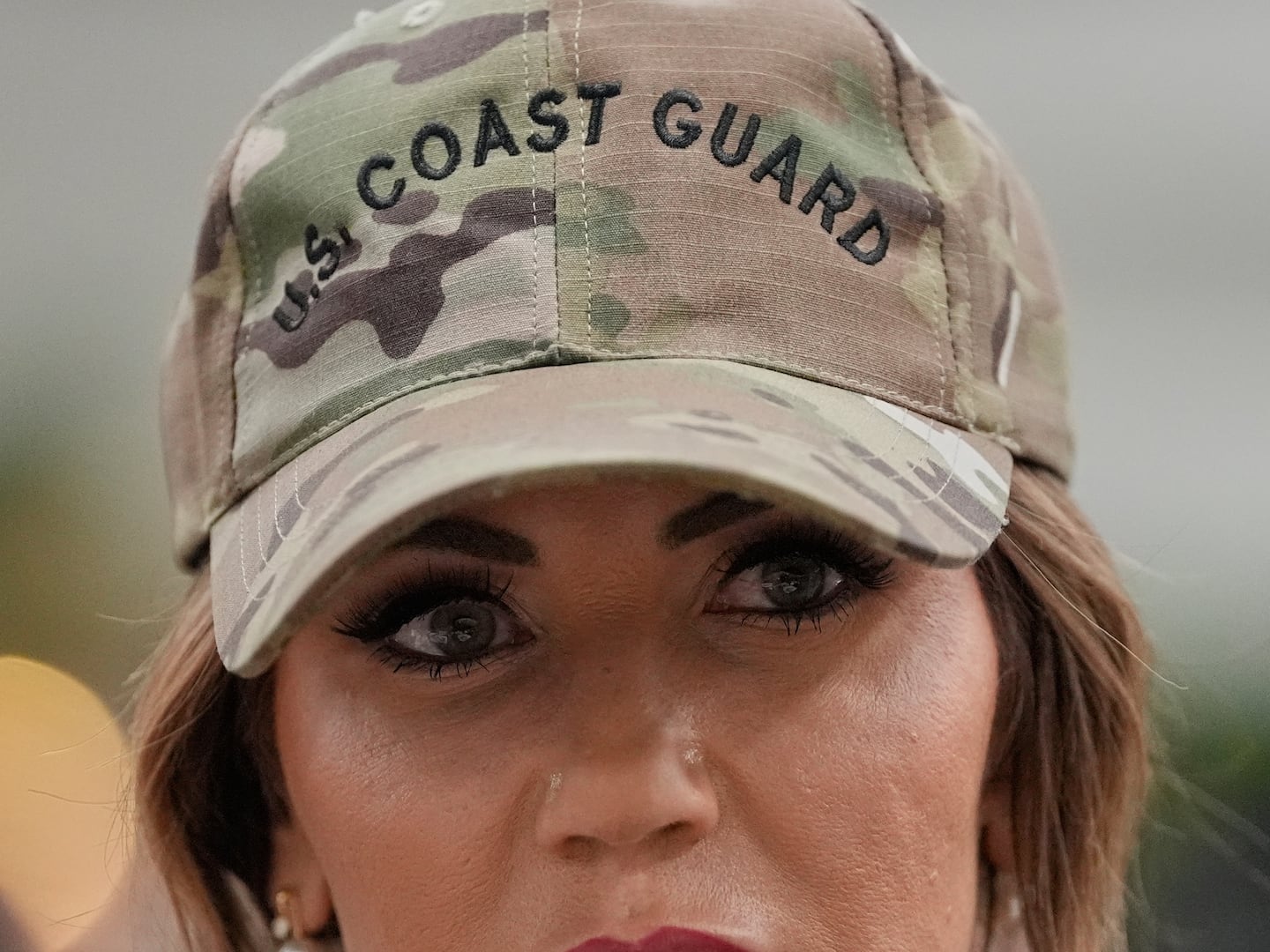As the United States falls deeper into this massive, Omicron-fueled coronavirus wave, we are running up against the limits of basic disease-control tools like masking and social distancing. After all, we’re in a much different position today than we were even weeks ago, with states like New York experiencing their highest daily case tallies of the entire pandemic. Midwest states previously racked by Delta are still barely treading water. And testing is once again a disaster across the country.
In light of these disturbing realities, and a society and health-care system again showing signs of bursting at the seams, it’s time to focus less on counting cases and preventing transmission and more on preventing serious disease, hospitalizations, and deaths.
The federal government is beginning to recognize this reality—and clear signs of pandemic fatigue. On Monday, Dr. Rochelle Walensky, director of the Centers for Disease Control and Prevention (CDC), reduced by half the recommended period of isolation for individuals who test positive for COVID-19 (from 10 days to five days of isolation and five more with constant mask use). The agency has also effectively begun hinting that it may view 3 mRNA doses as fully vaccinated, rather than just two. Under the new guidance, only people who have gotten booster shots can skip quarantine after close contact with a positive case (if they wear masks in all settings for at least 10 days).
The revised rules are not a product of the pandemic threat having somehow become less dangerous. On the contrary, the Omicron variant is among the most contagious pathogens in human history. Consider just how infectious Omicron is: Early, since-revised, estimates suggested the Delta variant was nearly as infectious as chickenpox, which spreads so easily that if one person has it, up to 90 percent of the close contacts will also become infected; Omicron may be at least twice as infectious as Delta, with a Japanese study suggesting it may be four times more transmissible. A Hong Kong study found the Omicron variant multiplies 70 times faster in the bronchial tubes than the Delta variant. Both the Japanese and Hong Kong studies must still undergo peer review, but they are suggestive of a highly transmissible agent.
If these data are confirmed, they suggest that evading COVID-19 is becoming, at least for many more millions of Americans than previously, a virtually impossible task. Sure, if a person decides not to live a normal life and stay in a virtual bubble, he or she may avoid infection. But for most people, if they venture into contact with family, friends, and neighbors, if they travel or go to restaurants or concerts, eventually they are likely to become infected—perhaps even if they make an effort to mask up and distance. Human behavior can’t be curtailed indefinitely. For most of us, we will lower our mask to eat or drink, or take it off when we think we are safe.
The German Health Minister Jens Spahn recently suggested that, most likely, by the end of this winter everyone will have either been “vaccinated, recovered, or died.” I might revise that time-frame to cover the next year or two, but ultimately, I suspect it is an accurate assessment.
Still, if we get to a place where COVID-19 makes most or even the vast majority of us feel crummy (much like a bad viral infection, say, the flu), and doesn’t force us to go to the hospital and doesn’t cause long-term debilitation, that is something we can live with. And, in fact, it may be the most realistic way we have of ending the pandemic.
By ending the pandemic, I don’t mean COVID-19 will go away. It won’t. SARS-CoV-2 will be endemic and still result in misery for many who get it and serious disease or death for some (particularly the most vulnerable)—just like seasonal influenza. But if we have the tools to prevent bad outcomes in the vast majority of cases, most of us will just stop caring as much. We’ll return—more or less—to a pre-pandemic lifestyle.
The most encouraging part is we are on the verge of having those very tools.
By far the best tool is full vaccination, with full vaccination now—in my opinion, and probably soon the federal government—being defined as three mRNA doses. For those who have had COVID-19, and who are also vaccinated, there is particularly strong immunity. Overall, the more people vaccinated, the more population-level protection from serious disease we’ll have.
At the same time, there are now quite good therapies for COVID-19—even Omicron cases. The best treatments are those offered to patients to prevent hospitalizations. Out-of-hospital treatments include two FDA-authorized oral antivirals, Pfizer’s Paxlovid and Merck’s molnupiravir. Clinical trials suggest Paxlovid is by far the superior treatment. If taken within 3-5 days of symptom onset, it has been shown to reduce hospitalizations among high-risk adults by 89 percent.
COVID-19 monoclonal antibody therapeutics (mAb) have been a mainstay in keeping people out of the hospital for many months, though two of the three monoclonal antibody treatments do not appear to be effective against the Omicron variant. The one monoclonal antibody treatment that has performed well against Omicron in laboratory experiments is sotrovimab, made by GlaxoSmithKline and Vir Biotechnology, which the FDA authorized in May.
So we have tools that work, or at least could work if American dysfunction—both on the part of individuals and the government—were not standing in the way.
While we spent months with supply shortages, today, anyone who wants a vaccine can get one. Still, the U.S. is far below virtually all our peer countries in getting jabs into arms. Only 61.8 percent of our population is fully vaccinated according to the current CDC standard for “full” vaccination, meaning two mRNA doses. Only about a quarter of adults have had a booster, leaving gaps, including among highly vulnerable nursing-home residents. An estimated 30 million adults are totally unvaccinated.
This all means that a wide swath of the U.S. population is at elevated risk of hospitalization or death from COVID-19. Given this stark reality, you probably know someone you might try to convince to get vaccinated and/or boosted already.
The news isn’t much better for the other tools at our disposal.
In November, President Biden purchased 10 million courses of Paxlovid, costing $5 billion. But the treatment likely won’t be widely available for months. And already in high demand even before Omicron arose, sotrovimab (the most promising antibody treatment against this variant) is in very limited supply.
In other words, we are right back where we were with vaccines a year ago, but this time with critical shortages of life-saving treatments. It ought to be unacceptable to the public that a lifesaving at-home pill or out-patient infusion treatment should be so hard to access.
So as dispiriting as this moment may feel, resigning yourself to the prospect that you or many of those you know may inevitably get COVID-19 is no reason to be reckless. In fact, now is a uniquely bad time to get COVID-19, even if (and we don’t know this for sure) the Omicron variant causes less severe disease. Why? Right now, hospitals are brimming with patients, many with staff shortages and running low on critical-care beds and other medical resources. And key out-patient treatments are not widely available. In short, you might not get optimal care if you become symptomatic with COVID-19. And this could last for many weeks, probably months.
A dose of realism suggests that even as we tire of it, and the government makes concessions, the only way to keep a perilous situation at bay is through traditional tools like masking, distancing, and ventilation. In other words, yes, a last-gasp attempt to “flatten the curve” to safeguard our health and hospital system. It may seem like a doomed project in the face of such a contagious new threat, but especially with a new, more realistic federal standard, we owe it to hospital workers and each other—at least for a few more critical weeks.
In the meantime, it’s within our own power to protect ourselves and loved ones by getting vaccinated and boosted. And it’s in the Biden administration’s power to rapidly end shortages of all the therapeutic tools our doctors need to keep us out of the hospital. At that point, we can begin transitioning to a more normal life–not one in which we treat COVID-19 like some kind of harmless cold, but one in which we don’t allow it to dominate our society.







